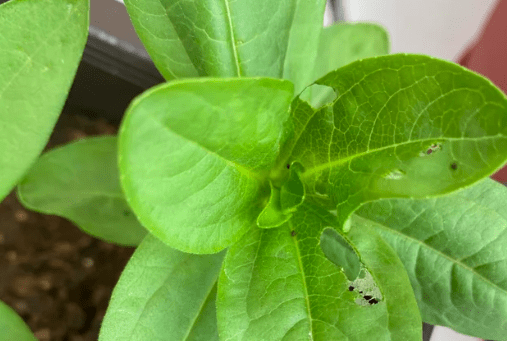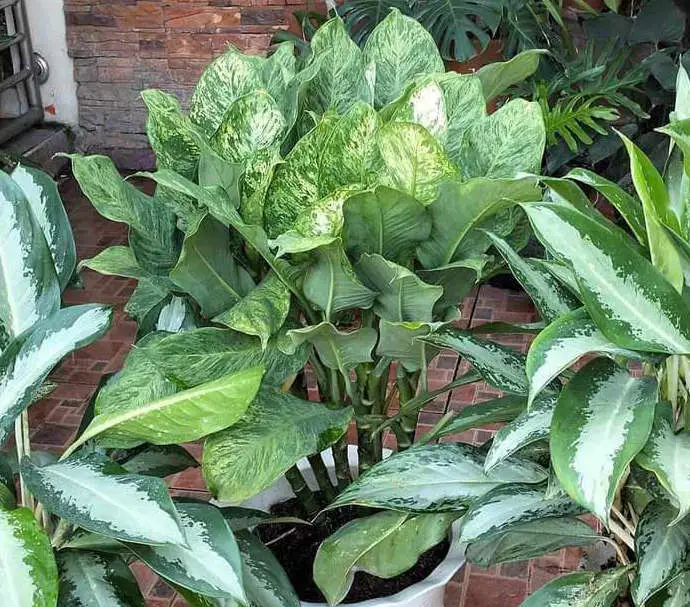Do you know what causes holes in zinnia flowers? Many people don’t, and it’s a mystery to many gardeners. Luckily, I’ve faced this issue before and I know exactly what causes it. In this blog post, I’ll share what I’ve learned so you can avoid this problem in your own garden.
Why Are There Holes in My Zinnia Flowers?
Pests are the most likely culprit when it comes to holes in zinnia flowers. Aphids, thrips, and earwigs are all common pests that can cause damage to zinnias. These pests enjoy feeding on the flowers, which can cause holes and other damage.
If you suspect that pests are to blame, check your plants carefully for any signs of these critters. Aphids are small, green insects that often congregate on the undersides of leaves. Thrips are tiny, black bugs that can be difficult to spot. Earwigs are brown or black insects with pincers on their rear end.
You may not realize you have a pest problem until you see the damage they’ve caused, especially as they tend to hide during the day. Take a microfiber cloth and lightly dab it over the affected area. If you see any pests, gently remove them by hand or with a hose.

How to Remove Pests from Zinnia Flowers?
Big pests can be picked off by hand and then disposed of in a bucket of soapy water. This is ideal for slug removal. Smaller pests, like aphids and thrips, can be blasted away with a hose. For earwigs, try setting out a shallow dish of soapy water overnight. In the morning, you should find them drowned in the water.
My go-to solution is giving the flowers a good soak of Neem oil, which is a natural and organic insecticide. It’s made by pressing the seeds of the Neem tree and has a wide range of uses, including as an insecticide, fungicide, and pesticide. You can find it at most garden stores or online.
Simply spray the solution on the flowers, making sure to cover all sides of the leaves where pests could be hiding. Neem oil works by disrupting the hormone system of insects, which prevents them from being able to molt or reproduce. This makes it an effective way to get rid of pests without harming your plants.
You should see a noticeable difference within a few days. Continue spraying every few days for a week or so to make sure all the pests are gone.
Preventing Pests on Zinnia Flowers
The best way to deal with pests is to prevent them from becoming a problem in the first place. This is usually done by keeping your garden clean and free of debris. Pests love to hide in clutter, so by keeping your garden tidy, you make it less inviting to them.
You may also want to promote beneficial insects in your garden, like ladybugs and lacewings. These predators feast on common garden pests, so by encouraging them to stick around, you can help keep the population of harmful insects under control.
Finally, inspect your plants regularly for any signs of pests. The sooner you catch them, the easier they’ll be to deal with. you may even want to apply neem oil as a preventative measure, especially if you live in an area with a lot of pests.

What Else Could Cause Holes?
While pests should take most of the blame when it comes to holes in zinnia flowers, there are a few other possible culprits.
Disease
Certain diseases, like powdery mildew and botrytis, can cause holes in zinnia flowers. These diseases are usually caused by too much moisture, whether from rain or watering. The disease usually starts as spots on the leaves before spreading throughout the whole plant and causing the flowers to become discolored and distorted.
If you suspect your plants have a disease, use a magnifying glass to take a closer look. If you see any spots or discoloration, try removing the affected leaves. You can also treat the plants with a fungicide to help prevent the disease from spreading.
Bad Weather
Harsh weather conditions can also cause holes in zinnia flowers. Extreme heat or cold can damage the flowers, causing them to become distorted or to fall off the plant entirely. Strong winds can also cause damage, especially if the plants are already weakened by pests or disease.
Protecting your zinnias from weather damage is tricky, but the best way to prevent it is by choosing a sheltered spot in your garden and using stakes or cages to support the plants. This will help them withstand strong winds and keep them from being toppled over by heavy rain or snow.
Animals
Finally, animals can also cause holes in zinnia flowers. Birds and rabbits are known to nibble on flowers, leaves, and stems. The good news is that deer tend to leave zinnias alone. If you live in an area with a lot of wildlife, you may want to take steps to protect your plants.
One way to do this is by covering the plants with netting or row covers. You can also try using repellents, like hot sauce or cayenne pepper, to deter animals from coming near your plants.
Should I Prune Zinnia Flowers with Holes?
That is entirely up to you. Some people believe that pruning damaged flowers will encourage the plant to produce more blooms. Others simply don’t like the way damaged flowers look and prefer to remove them.
Personally, I prune when a fungal disease is present because it can spread quickly and damage the rest of the plant. I also prune if the damage is extensive and unsightly. Otherwise, I leave the damaged flowers alone.
Conclusion
In conclusion, holes in zinnia flowers are most likely caused by pests. However, there are a few other possible culprits, like disease and bad weather. If you suspect your plants have a pest problem, take steps to treat it right away. You can also try pruning the damaged flowers to encourage new growth.
Do you have any tips for dealing with holes in zinnia flowers? Share them in the comments below!
Tim is an avid gardener from the UK. He was the founder of PlantCarer.com from 2021 to Sep 2023. He sold PlantCarer.com to Aaron. He has since started his own business called Seed To Supper, which provides new gardeners all the materials you need in a box (pots, seeds, compost and instructions) to grow your own delicious and nutritious vegetables and herbs from start to finish – no garden required.






0 Comments